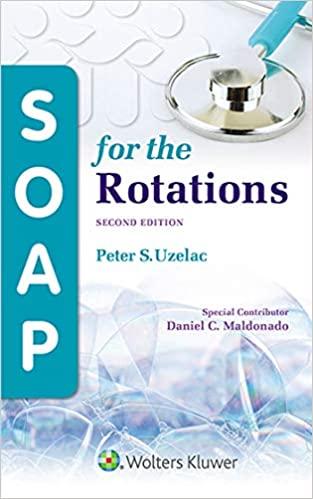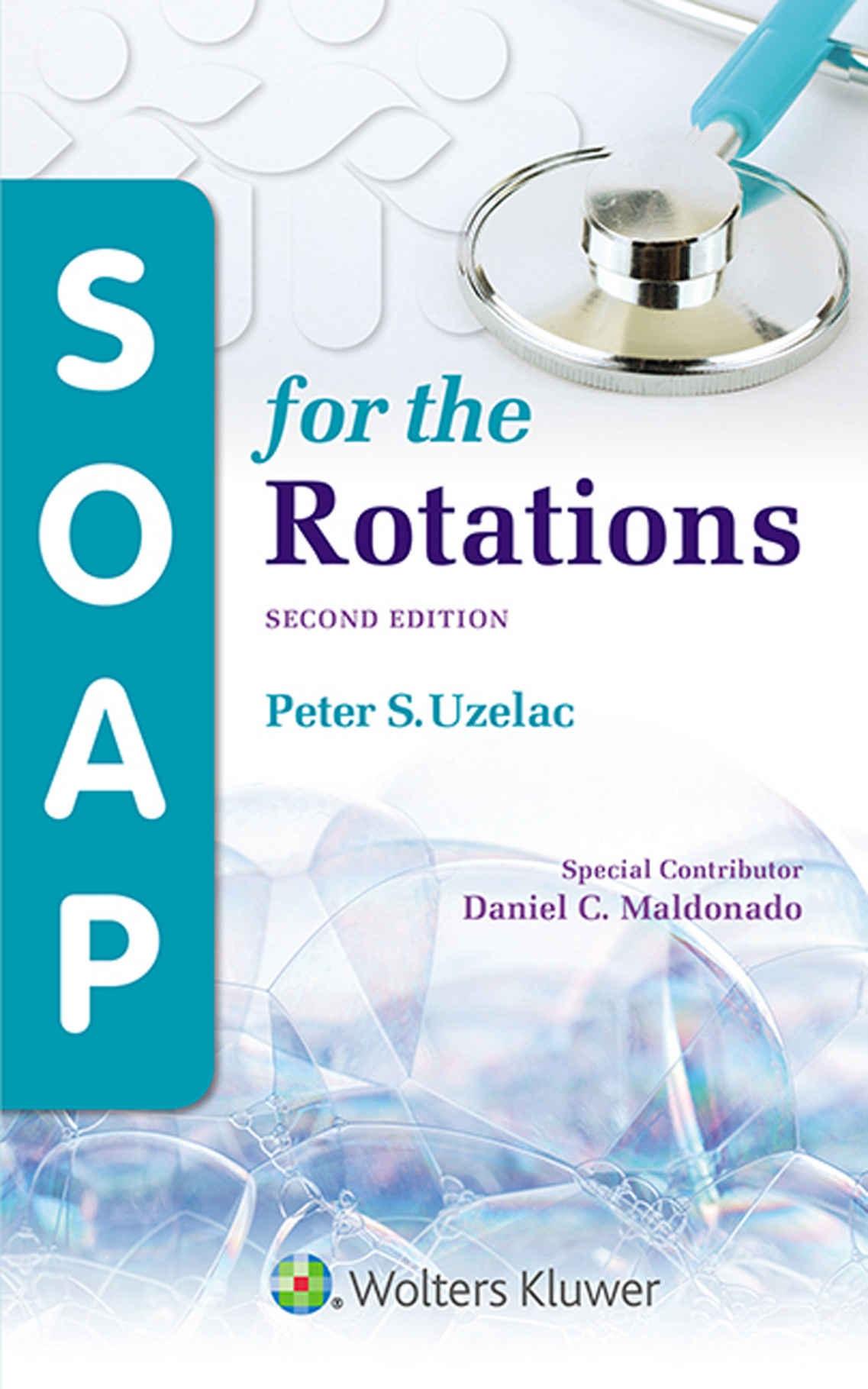https://ebookmass.com/product/soap-for-the-rotations/
Instant digital products (PDF, ePub, MOBI) ready for you
Download now and discover formats that fit your needs...
Beyond pseudo-rotations in pseudo-Euclidean spaces Ungar
https://ebookmass.com/product/beyond-pseudo-rotations-in-pseudoeuclidean-spaces-ungar/ ebookmass.com
Home for the Holidays Terry Spear [Spear
https://ebookmass.com/product/home-for-the-holidays-terry-spear-spear/
ebookmass.com
The New Automation Mindset : The Leadership Blueprint for the Era of AI-For-All Vijay Tella
https://ebookmass.com/product/the-new-automation-mindset-theleadership-blueprint-for-the-era-of-ai-for-all-vijay-tella/
ebookmass.com
Oswaal CBSE Sample Question Papers Class 10 Social Science Book (For 2023 Exam) 25 September 2022 Edition Oswaal Editorial Board
https://ebookmass.com/product/oswaal-cbse-sample-question-papersclass-10-social-science-book-for-2023-exam-25-september-2022-editionoswaal-editorial-board/ ebookmass.com
Essentials of Kumar & Clark’s Clinical Medicine 6th Edition Nicola Zammitt
https://ebookmass.com/product/essentials-of-kumar-clarks-clinicalmedicine-6th-edition-nicola-zammitt/
ebookmass.com
Low-back Pain
Polyarthritis
Gout
Rheumatoid Arthritis
Seronegative Spondyloarthropathies
Inflammatory Myopathies
Systemic Lupus Erythematosus
Vasculitis
Systemic Sclerosis
Chapter 9. Toxicology
Alcohol Intoxication and Withdrawal
Cocaine Intoxication and Withdrawal
Section 2. Pediatrics
Chapter 10. Newborn Nursery
Newborn Exam
Birth Trauma
Benign Skin Lesions
Chapter 11 Pediatric Clinic
Well-Child Care: Infant
Well-Child Care: Toddler
Well-Child Care: Child
Well-Child Care: Adolescent
Hyperactive and School-Related Complaints ADHD
Chronic Cough and Wheeze Asthma
Chronic Runny, Stuffy Nose Allergic Rhinitis
Postpartum Visit
Anemia
Antiphospholipid Syndrome
Chronic Hypertension
Gestational Diabetes Mellitus
Hyperthyroidism
Intrauterine Growth Restriction
Isoimmunization
Mild Preeclampsia
Nausea and Vomiting of Pregnancy
Severe Preeclampsia
Twin Gestation
Urinary Tract Infection
Chapter 15. Labor and Delivery
Term Labor
Third Trimester Bleeding
Chorioamnionitis
Labor Dystocia
Preterm Labor
Pyelonephritis
Rupture of Membranes
Chapter 16 Maternity Ward
Postpartum Day 1
Postpartum Day 2
Dyspnea
Postpartum Fever
Diverticulitis
Foreign-Body Ingestion
Gastroesophageal Reflux Disease
Gastrointestinal Bleeding
Hepatitis
Ischemic Bowel
Pancreatitis
Peptic Ulcer Disease
Chapter 22 Genitourinary
Acute Renal Failure
Epididymitis
Hernia
Hydrocele/Varicocele
Kidney Stones/Nephrolithiasis
Pyelonephritis/UTI
Rhabdomyolysis
Testicular Torsion
Chapter 23. Neurology
Altered Mental Status
Headache
Meningitis
Seizures
Stroke
Vertigo
Weakness
Chapter 24. Trauma
Animal Bite
Ankle Sprain
Burns
Fracture
Head Injury
Laceration
Section 5. Psychiatry
Chapter 25 Guidelines for Conducting a Psychiatric Interview
Chapter 26. Personality Disorders
Chapter 27. Psychotic Disorders
Chapter 28 Anxiety Disorders
Chapter 29. Mood Disorders
Chapter 30. Dissociative Disorders
Chapter 31 Impulse Control Disorders
Chapter 32. Neurocognitive Disorders
Chapter 33. Somatic Symptoms
Chapter 34 Sleep Disorders
Chapter 35. Eating Disorders
Chapter 36. Sexual Dysfunction
Chapter 37. Substance Use Disorders
Chapter 38. Posttraumatic Stress Disorder
Appendix A
Index
Nida Zahra, MD
Assistant Professor and Medical Director
Department of Family and Community Medicine
University of Texas, Southwestern Medical Center
Dallas, Texas
Section 2: Pediatrics
To The Reader
Like most medical students, I started my ward experience head down and running, eager to finally make contact with real patients What I found was a confusing world, completely different from anything I had known during the first 2 years of medical school New language, foreign abbreviations, and residents too busy to set my bearings straight: Where would I begin?
Pocket textbooks, offering medical knowledge in a convenient and portable package, seemed to be the logical solution. Unfortunately, I found myself spending valuable time sifting through large amounts of text, often not finding the answer to my question, and in the process missing out on teaching points during rounds!
I designed the SOAP series to provide medical students and house staff with pocket manuals that truly serve their intended purpose: quick accessibility to the most practical clinical information in a user-friendly format. At the inception of this project, I envisioned all of the benefits the SOAP format would bring to the reader:
Learning through this model reinforces a thought process that is already familiar to students and residents, facilitating easier long-term retention.
SOAP promotes good communication between physicians and facilitates the teaching/learning process.
SOAP puts the emphasis back on the patient’s clinical problem and not the diagnosis. In the age of managed care, SOAP meets the challenge of providing efficiency while maintaining quality.
As sound medical-legal practice gains attention in physician training, SOAP emphasizes adherence to a documentation style that leaves little room for potential misinterpretation
Rather than attempting to summarize the contents of a 1,000-page textbook into a miniature form, the SOAP series focuses exclusively on guidance through patient encounters. In a typical use, “finding out where to start” or “refreshing your memory” with SOAP books should be possible in less than a minute Subjects are always confined to 2 pages, and the most important points have been highlighted Topics have been limited to those problems you will most commonly encounter repeatedly during your training, and contents are grouped according to the hospital or clinic setting Facts and figures that are not particularly
helpful to surviving life on the wards, such as demographics, pathophysiology, and busy tables and graphs, have purposely been omitted (such details are much better studied in a quiet environment using large and comprehensive texts).
Congratulations on your achievements thus far, and I wish you a highly successful medical career!
Peter S. Uzelac, MD, FACOG, HCLD (ABB)
Abbreviations
17OHP4 17-alpha hydroxy-progesterone
A1c hemoglobin A1c
A-a gradient alveolar-to-arterial gradient
AAA abdominal aortic aneurysm
AAP American Academy of Pediatrics
ABC airway, breathing, circulation
Abd abdomen
ABG arterial blood gas
AC abdominal circumference
ACE angiotensin-converting enzyme
ACLS advanced cardiac life support
ACS acute coronary syndrome
ADA American Diabetic Association
ADH antidiuretic hormone
ADHD attention deficit hyperactivity disorder
AFB acid-fast bacilli
AFI amniotic fluid index
AFP alpha-fetoprotein
AFSFO anterior fontanelle soft, flat, and open
AG anion gap
AIDS acquired immunodeficiency syndrome
AIHA autoimmune hemolytic anemia
ALL acute lymphocytic leukemia
ALS amyotrophic lateral sclerosis
ALT alanine aminotransferase
Alt alternative regimen
ALTE acute life-threatening event
AML acute myeloid leukemia
AMS altered mental status
ANA antinuclear antibody
Anti-ENA-4 panel of rheumatologic labs
CV cardiovascular
CVA costovertebral angle, cerebrovascular accident
CVAT costovertebral angle tenderness
CVS chorionic villus sampling
CXR chest x-ray
D5½NS 5% dextrose in half normal saline
D10 a solution with 10% dextrose
D25 a solution with 25% dextrose
D&C dilation and curettage
DBP diastolic blood pressure
DBT dialectical behavior therapy
DDX differential diagnosis
Derm dermatology
DES diethylstilbestrol
DEXA dual-energy x-ray absorptiometry
DHEAS dehydroepiandrosterone sulfate
DHP dihydropyridine
DI diabetes insipidus
DIC disseminated intravascular coagulation
DID dissociative identity disorder
Diff differential
DIP distal interphalangeal joint
DKA diabetic ketoacidosis
dL deciliter
DLCO diffusing capacity of the lung for carbon monoxide
DM diabetes mellitus
DMARD disease-modifying antirheumatic drug
DNA deoxyribonucleic acid
DPP-4 inhibitor dipeptidyl peptidase-4 inhibitor
DRE digital rectal exam
DTaP diphtheria, tetanus, and acellular pertussis vaccine
DTR deep tendon reflexes
DUB dysfunctional uterine bleeding
DVT deep venous thrombosis
EBL estimated blood loss
EBV Epstein-Barr virus
EC emergency contraception
ECG electrocardiogram
ECT electroconvulsive therapy
ECV extracellular volume
ED erectile dysfunction
EDC estimated date of confinement
HSV herpes simplex virus
HTN hypertension
HUS hemolytic uremic syndrome
Hz Hertz
IBD inflammatory bowel disease
IBS irritable bowel syndrome
ICH intracranial hemorrhage
ICP intracranial pressure
ICSI intracytoplasmic sperm injection
ICU intensive care unit
ID infectious disease
IDM infant of diabetic mother
IE infective endocarditis
Ig immunoglobulin
IHSS idiopathic hypertrophic subaortic stenosis
ILD interstitial lung disease
IM intramuscular
IMA inferior mesenteric arteries
IMM intramyometrial
INH isoniazid
INR international normalized ratio
I/O input and output
IPV inactivated poliovirus vaccine
ISAM infant of a substance-abusing mother
ITP idiopathic thrombocytopenic purpura
IU international unit
IUD intrauterine device
IUGR intrauterine growth restriction
IUI intrauterine insemination
IUP intrauterine pregnancy
IV intravenous
IVC inferior vena cava
IVDA intravenous drug administration
IVF intravenous fluid; in-vitro fertilization
IVIG intravenous immunoglobulin
IVP intravenous pyelogram
JRA juvenile rheumatoid arthritis
K potassium
KD Kawasaki disease
kg kilogram
KOH potassium hydroxide
KS Kaposi sarcoma








